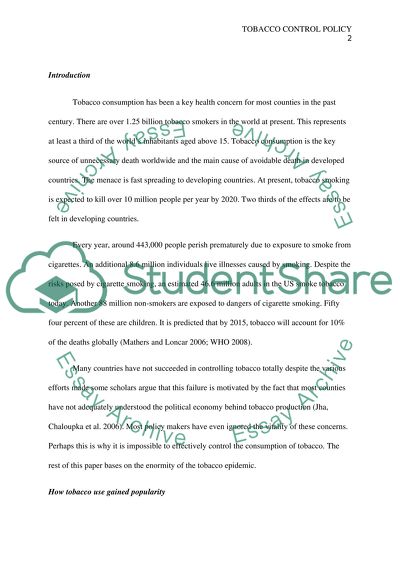Cite this document
(“Tobacco Control Policy Research Paper Example | Topics and Well Written Essays - 4000 words”, n.d.)
Tobacco Control Policy Research Paper Example | Topics and Well Written Essays - 4000 words. Retrieved from https://studentshare.org/health-sciences-medicine/1402800-tobacco-control-policy
Tobacco Control Policy Research Paper Example | Topics and Well Written Essays - 4000 words. Retrieved from https://studentshare.org/health-sciences-medicine/1402800-tobacco-control-policy
(Tobacco Control Policy Research Paper Example | Topics and Well Written Essays - 4000 Words)
Tobacco Control Policy Research Paper Example | Topics and Well Written Essays - 4000 Words. https://studentshare.org/health-sciences-medicine/1402800-tobacco-control-policy.
Tobacco Control Policy Research Paper Example | Topics and Well Written Essays - 4000 Words. https://studentshare.org/health-sciences-medicine/1402800-tobacco-control-policy.
“Tobacco Control Policy Research Paper Example | Topics and Well Written Essays - 4000 Words”, n.d. https://studentshare.org/health-sciences-medicine/1402800-tobacco-control-policy.


